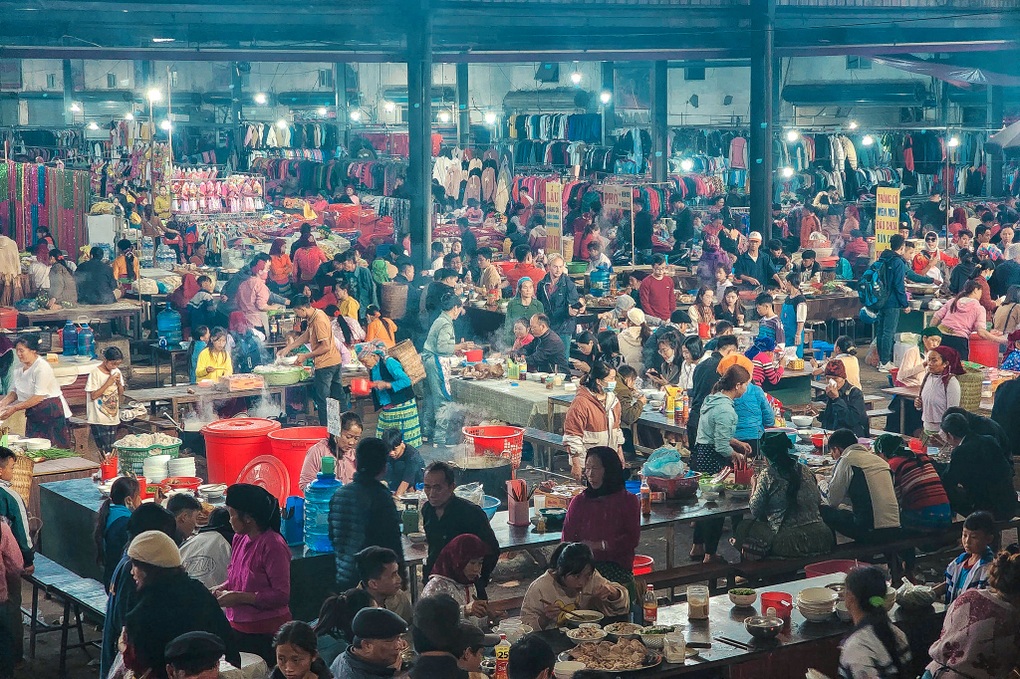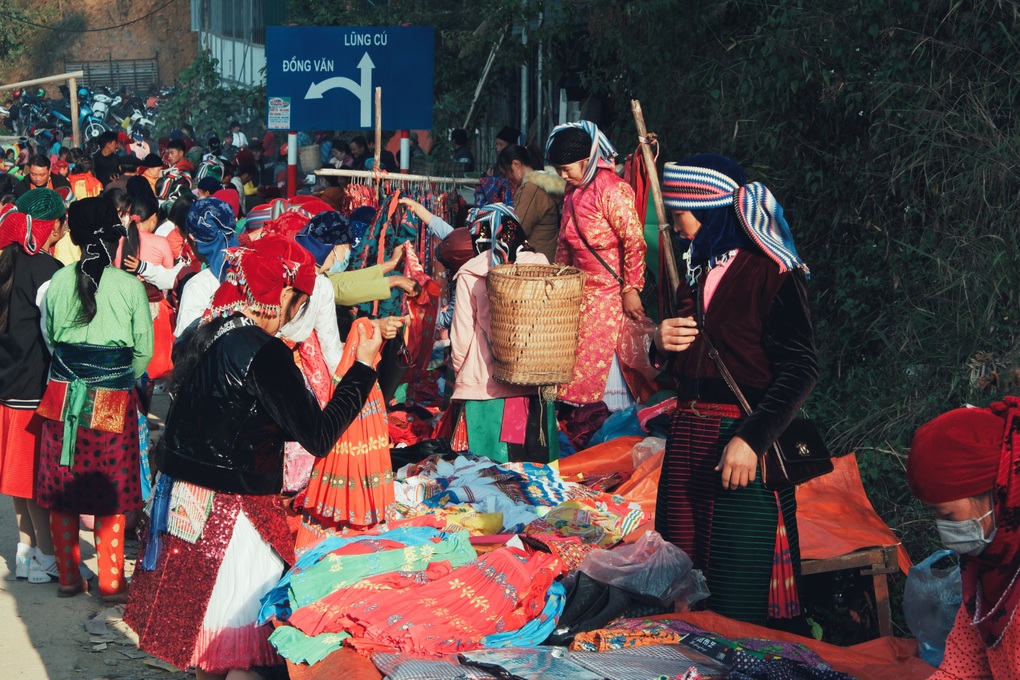Cultural Significance of Markets in Ha Giang
Markets in Ha Giang are more than just places for buying and selling goods—they are the center of social interaction for many of the province’s ethnic groups, including the Hmong, Tay, and Dao. These markets provide a chance for families to come together, share news, and celebrate local customs. Every market in Ha Giang has its unique character, defined by the people who visit, the goods sold, and the traditions upheld.For the residents, markets are not just about commerce but are deeply rooted in cultural practices. They function as hubs for exchanging not just goods, but also stories and traditions. For many ethnic groups, market day is also a social occasion, where people from remote villages gather to catch up and showcase their wares.
Markets in Ha Giang
Famous Markets in Ha Giang
There are several iconic markets in Ha Giang, each offering its own blend of culture, goods, and local traditions. Three of the most famous are Dong Van Market, Meo Vac Market, and Quan Ba Market.Dong Van Market
Perhaps the most well-known of Ha Giang’s markets, Dong Van Market is held every Sunday in Dong Van town. This market is a colorful gathering of ethnic minority groups, who come down from the mountains to sell their goods, ranging from agricultural produce to handwoven textiles. The market is a vibrant mix of sounds and sights, where the local Hmong people sell their handmade goods, while others bring livestock such as pigs, cows, and chickens to trade.The rich history of Dong Van Market, coupled with its unique blend of traditional and modern goods, makes it a must-see for any traveler. The market is also famous for its local delicacies like “thang co” (a traditional horse meat soup) and freshly harvested honey, giving visitors a taste of Ha Giang’s unique culinary traditions.
Dong Van Market
Meo Vac Market
Held every Sunday, Meo Vac Market is another must-visit for travelers seeking an authentic market experience in Ha Giang. Located near the Chinese border, Meo Vac Market is especially known for its lively livestock trade. It’s one of the largest livestock markets in the region, where farmers bring cows, goats, pigs, and buffaloes to sell.In addition to livestock, Meo Vac is a great place to find handcrafted goods made by local artisans. From beautifully embroidered garments to intricate silver jewelry, the market is full of treasures that reflect the cultural heritage of the region’s ethnic groups. Meo Vac also boasts a vibrant food scene, where visitors can sample local dishes such as “corn cake” and various kinds of pickled vegetables.
Meo Vac Market
Quan Ba Market takes place every Saturday and is famous for its scenic location amidst the rolling mountains of Quan Ba district. Smaller and more intimate than Dong Van or Meo Vac, this market offers a quieter yet equally fascinating experience. Visitors to Quan Ba Market will find a wide range of agricultural products, including fresh fruits and vegetables grown in the fertile valleys surrounding the area.What makes Quan Ba Market stand out is its focus on local specialties, such as honey, herbal medicines, and forest products. Many of the goods sold here are grown or produced by the ethnic groups who live in the region. This market is also a great place to interact with local farmers and learn about their sustainable farming practices.
Quan Ba Market
Ethnic Diversity in Ha Giang Markets
One of the most captivating aspects of Ha Giang’s markets is the ethnic diversity on display. The province is home to more than 20 different ethnic groups, including the Hmong, Tay, Dao, Giay, and Nung, each with their distinct customs and traditional dress. This diversity is reflected in the markets, where traders wear brightly colored traditional clothing, often adorned with intricate embroidery.Each ethnic group brings its products to market, whether it’s hand-dyed fabrics, silver jewelry, or traditional medicines made from local herbs. For visitors, this offers a unique opportunity to learn about the distinct cultures of northern Vietnam’s highlands, all in one place.Products and Goods Sold at Ha Giang Markets
The markets in Ha Giang are a feast for the senses, offering an array of products that reflect the region’s agricultural and artisanal heritage. Some of the most popular items include:- Agricultural Products: Fresh fruits, vegetables, and herbs are common sights, with many of these products grown organically in the surrounding mountains.
- Handicrafts: Traditional crafts, including handwoven textiles, baskets, and pottery, are sold by artisans from various ethnic groups.
- Traditional Medicines: Made from local herbs and plants, these medicines are used to treat a variety of ailments and are a testament to the rich knowledge of herbal medicine in the region.
Livestock Trading in Ha Giang Markets
Livestock plays a crucial role in Ha Giang’s rural economy, and the markets are where much of this trade takes place. Animals such as pigs, chickens, goats, and buffaloes are brought to market by farmers from remote villages. Livestock markets are also social events, where farmers negotiate prices, exchange tips, and even arrange future trades. The buying and selling of livestock are steeped in tradition, with many of the methods and practices passed down through generations.Traditional Food at Ha Giang Markets
No trip to a Ha Giang market is complete without sampling the local food. Each market has its specialties, offering travelers a taste of the region’s unique cuisine. Some of the must-try dishes include:- Thang co: A hearty horse meat soup that is a favorite at Dong Van Market.
- Corn cake: A sweet, dense cake made from locally grown corn.
- Sticky rice: Often dyed with natural colors from local plants, this dish is a staple in many markets.
Market Days in Ha Giang
Each market in Ha Giang operates on a specific day of the week, with the weekend markets being the most popular. Sunday is the most common market day, with Dong Van and Meo Vac being prime examples. For travelers, it’s important to plan your visit around these market days to ensure you get the full experience. The bustling activity of a Sunday market, with traders coming from far and wide, is an unforgettable sight.How to Get to Ha Giang Markets
Ha Giang’s markets are often located in remote, mountainous areas, making transportation a key consideration for visitors. From Hanoi, travelers can take buses or private cars to Ha Giang town, from where local transportation options are available to the various markets. The roads can be challenging, especially in the rainy season, but the scenic beauty along the way makes the journey worthwhile.Tips for Visiting Ha Giang Markets
- Bargaining: Bargaining is expected in most markets, but it should be done respectfully.
- Local Customs: Be aware of local customs, particularly around photography—always ask for permission before taking photos of people, especially in ethnic minority communities.
- Respectful Interaction: Be mindful of the language barrier, but a smile and friendly gestures go a long way in fostering positive interactions.
